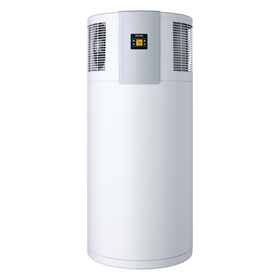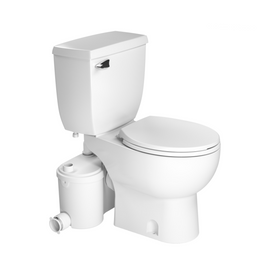
Tiny Gardens: A Comprehensive Guide
Last Updated: Feb 13, 2025Sometimes there isn’t enough space to grow a sprawling squash or a vining grape. Coming up with creative responses to the growing area question has led to various options for small gardens. But what exactly are these tiny gardens, and what can be grown in them?
Table of Contents
- What Are Tiny Gardens?
- Why Should You Grow a Tiny Salad Garden?
- What Is the Easiest Way to Grow Leafy Greens?
- What Is Edible Container Gardening?
- What Is Square Foot Gardening?

What Are Tiny Gardens?
While there is no specific gardening method geared towards “tiny gardening,” there are plenty of reduced garden plot options. These methods range from companion planting in a single container, single plants in tiny containers, and choosing the right plants to use every square foot you have.
So what makes a tiny garden? Well, it comes down to the size of your grow area and the container choices you make. A backyard can have a small garden plot in the corner, and when it comes to your balcony, the pots you grow your plants in don’t have to be garden pots. Better Homes & Gardens put together a list of various small garden ideas, and these were some of my favorites:
Wagon Container
This fun idea takes advantage of a wagon for growing your crops. This container is an excellent option for those who will have to chase the sun with their garden. Take note to drill holes in the bottom of your wagon to ensure that water can drain out. And always make sure to check that your wagon is safe to grow in, as chemicals can leach from various materials into the surrounding soil.

Galvanized Tubs
Galvanized tubs are layered in zinc to prevent rust from forming on the metal. This container makes them another option for planting. If you’re having trouble draining water from the bottom, consider raising the tub a few inches from the ground to allow the water more space to flow out and away quickly. Also, if you reside in a warm climate, be wary of the sun. The heat can quickly warm the metal, drying the soil and potentially damaging the roots.
Old Mugs
This one was a favorite because everyone eventually will have a mug that has become too worn or chipped or lost to the back of the cupboard. An old cup is a perfect size for a single lettuce plant, or maybe even two if you have a large enough mug. As with all DIY containers, make sure there are holes at the bottom for drainage and if you choose not to damage your cup, be cautious not to overwater.
Whether you are growing in small pots lining your vertical garden wall or layering pots at the edge of the balcony, you will have a choice of lettuce to consider. Sometimes, all it takes is harvesting the plant to an inch above the soil, giving it space to grow back. Other lettuce varieties do better when they are left to grow into a full head—or heart. There are four main types of lettuce varieties:
Looseleaf
Looseleaf lettuce does not form a compact head and tends to have a mild flavor. Selectively harvest outer leaves that are 2-to-3-inches in length or pull the plant when it reaches desired maturity.
Butterhead
Butterhead lettuce has a loosely formed head with a smooth flavored leaf. As is the same with looseleaf lettuce, you can harvest the outer leaves at any point or the entire head of lettuce once it fully matures.

Romaine
Romaine lettuce grows a tall head of sturdy leaves and is more tolerant to heat. While I have harvested my romaine leaf by leaf, I find it best when you harvest the hearts of lettuce at maturity.
Crisphead
Crisphead lettuce, commonly known as iceberg lettuce, produces a lovely leaf of lettuce that is sweet and has a snap to it. This lettuce is great in cooler climates, and as with the romaine, I would recommend harvesting when you have a mature, compact head.
But in the world of leafy greens, lettuces only make up a fraction of what can be harvested and put in a salad. Other varieties to consider could include:

Spinach
Spinach has been labeled a superfood in recent years for its abundance of vitamins and minerals. You can harvest spinach in a “cut and come again” method, harvesting the leaves you find tastiest and leaving enough for the plant to grow and produce more. But remember, the plant’s nutritional values are only as good as the food you put in the soil.

Arugula
Arugula is the largest of the leafy greens mentioned thus far and brings a peppery taste. If you have enough room for this plant’s square foot requirements, it adds an enjoyable kick to a dish. Be forewarned, though. The older the leaves get, the more bitter they become.
Add Flowers!
Finally, no salad is complete with a pop of color from a selection of edible flowers. Varieties like nasturtiums and pansies are a great addition to both your garden and the dish. I am a personal fan of both, with the former being my favorite for its color, flavor, and hardiness. If your tiny garden is an accessory to an already thriving garden plot, consider harvesting the occasional squash blossom to add. But don’t attempt to grow squash in your tiny garden. There is not enough room for these greedy plants to succeed.
What Is the Easiest Way to Grow Leafy Greens?
Unlike fruiting plants, like tomatoes and peppers, leafy greens require high amounts of nitrogen throughout the growing cycle. This abundance of nitrogen is processed into the green pigments of the leaves, improving photosynthesis. But no matter how well these leaves can process the sun, make sure you don’t have your salad greens in the direct afternoon sun. Give preference to morning sunlight for the delicate leaves. Otherwise, you may risk your lettuce quickly bolting (rushing to form seeds) due to the heat.
What Is Edible Container Gardening?
One of my most picked-up books has to be Edible Container Gardening, written by Rob Sproule. It takes the planning out of some culinary favorites, telling you what to plant and what size pot. So what are some options that would work for a tiny garden? Well, aside from the majority of the containers being easy to manage, there are a few that I found to be a must-have in my garden, including the pizza garden and the kaleidoscope window.

Pizza Garden
This container garden is great for the patio limited in space. Requiring three pots, it takes up less than five square feet!
Use two 24-inch pots. Each will have a unique combination of plants. The first will hold your Roma Tomatoes and both red and yellow varieties of your Tumbling Tom Tomatoes. The Romas will make up the bulk of the tomato sauce, while the Tumbling Toms will be a nice additional toping.
Now, be cautious when growing this many tomatoes in a single container. These hungry plants will quickly consume the nutrients from the potting mix, so you will need to feed them often. On top of standard nitrogen, phosphorous, and potassium, I have found Roma tomatoes, in particular, to be heavy feeders of calcium. Be sure to add calcium and magnesium to your feeding regiment as well, or risk losing your tomatoes to bud rot.
The second 24-inch pot will be home to your Green Bell Peppers, English Thyme, and Greek Oregano. The nice thing about this plant selection is that even if you are not a fan of bell peppers, you can swap them out with other pizza options, like chili peppers or eggplants.
Just remember, peppers, tomatoes, and eggplants all share a similar family: Solanaceae—commonly referred to as nightshades. The different plants do not grow well in the same pot, sharing viruses, attracting similar pests, and competing for similar nutrients, reducing their viability.

Plant the final 12-inch pot with one herb, basil, which is both a fantastic addition to pizza and plenty of dishes. There is no flavor like fresh-picked basil added to a pizza or pasta made with homegrown tomatoes.
Kaleidoscope Window
This tiny garden is a single long planter filled with a collection of colors and flavors. Select a container with dimensions of 12-inches by 30-inches to fit the selection of flowers.
This planter gives you varying heights to the plants to provide a window-planter with multiple dimensions. Begin by planting back curly willow, fennel, and ornamental corn.
Place nasturtiums and strawberries on the edges, giving them space to sprawl and drape over the edge. Be sure to choose a trailing type of nasturtium, like ‘whirlybird mix,’ or else you’re going to have an unintentional fourth vertical aspect to your box.
Rainbow chard, paired with a colorful mix of pansies and the nasturtium, brings a wide range of color and excitement to the container. Add in rosemary, chives, and purple sage, and you’ve got a selection of flavors and colors to bring you back to this design year after year.

What Is Square Foot Gardening?
If there is one gardening technique that promotes getting the most out of every square foot, it would have to be Square Foot Gardening. Mel Bartholomew developed this gardening technique to help gardeners grow food efficiently with limited space. It shows that, sometimes, vegetable spacing recommendations are exactly that, recommendations. And that you can get a lot more use out of your square footage with proper management.
When designing a square foot garden, it is assuming that you have created the standard 16 sq. ft. garden plot. But the containers can also be the small single square foot design and still be effective.
For example, the book explains that 16 carrots can be grown in a single square foot with the proper soil mixture, water, and lighting. That same square foot could also house four plants of leaf lettuce or nine leeks. And the nice thing about these boxes is that they can fit a railing or window sill with only slight adjustments!
The Sixteen Square Foot Herb Garden
One of my favorite garden plots in the official book has to be the 16 square foot herb garden. Divided into a single square foot container, you can pick and choose herbs for single boxes or build a complete garden bed. These are the recommended herbs per 12- x12-inch box for the garden.
- (1) Italian Parsley
- (1) Sweet Marjoram
- (8) Common Chives and (8) Garlic Chives
- (1) Lemon Thyme and (1) Lime Thyme
- (1) English Thyme and (1) French Thyme
- (1) Lemongrass
- (1) Blue Rosemary
- (1) Lemon Verbena
- (1) Fernleaf Dill
- (2) Provence Lavender
- (1) Sage
- (1) Tarragon
- (1) Lemon Basil
- (4) Large-Leaf Basil
- (1) Sweet Fennel
- (1) Italian Oregano
Growing in containers means that you are pulling nutrients away from the plant and the pot as you harvest your crops. Be sure to watch your plants for nutrient deficiency and top them up with a bit of compost as needed. These nutrients will leach into the soil over time with watering.
I have found success using the square foot gardening method and cannot recommend the book and the practice enough for the garden. From the mixtures to the planting strategies, square foot gardening is an excellent option for gardeners with restricted space or those who want to make use of every inch.

While being limited on root space, tiny gardens can provide adequate room for herbs, salads, and even some of your favorite toppings. Never be afraid to try out small-scale gardening because, if at first you don’t succeed, at least it wasn’t a whole backyard!
Tanner Sagouspe
Tanner Sagouspe has a Masters in Environmental Management and is a Permaculture Designer who promotes tackling the climate crisis at home.











